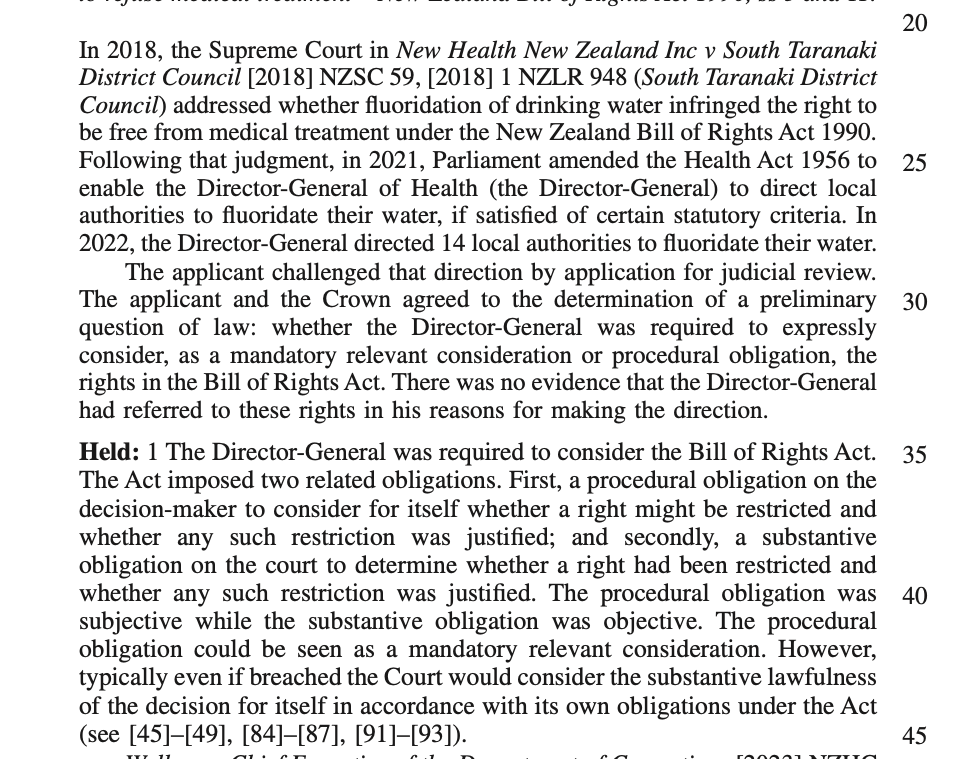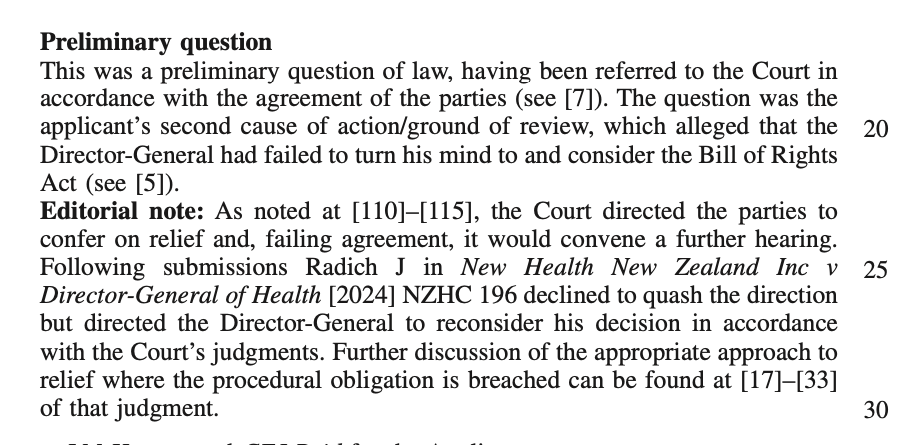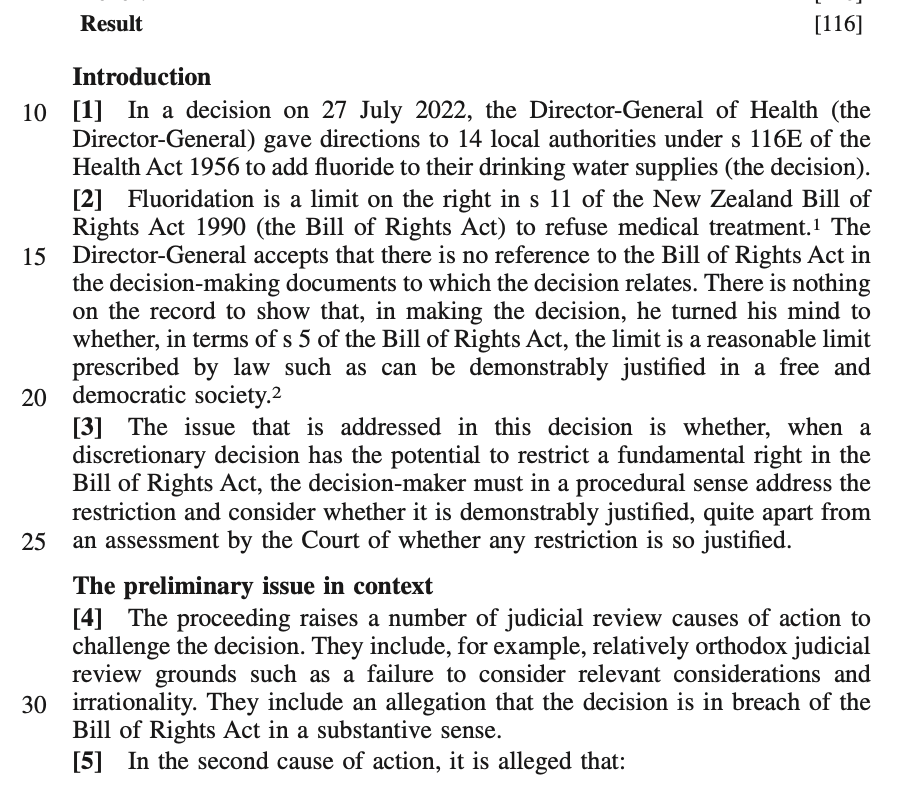Components of a law report
Any law reports, must contain certain fundamental pieces of information in order to justify its being cited in support of a proposition of law.
First of all, it must have a title, usually based on the names of the parties. It must identify the court giving judgment, and the date on which it was given.
Most fundamentally, it needs to contain a statement of the principle of law decided in the case. The statement should ideally be expressed as a rule or proposition which can be applied in subsequent cases even if the facts are not the same. It will usually be taken from the words actually used by the judge(s) but it may be condensed in some way and put into reported rather than quoted speech. The most highly evolved form of such a statement is to be found in the modern headnote of a full text law report.
Finally, to reassure the reader of the reliability of the report, the reporter must be a qualified lawyer, and this must be evident either from the report itself or the publication in which it appears.
The above five elements (title, court, date, principle of law, reporter) constitute the bare minimum for a summary report. But most reports contain a number of other elements, most notably the full text of the judgment(s) in the case and the names of the judge(s).
The example images following of what constitutes the components of a law report have all been taken from the real case of "New Health New Zealand Inc v Director-General of Health" – download the entire case
1. Title, Court, Date & Judges


Usually the first things a law report will state are the case title, the court from which it is taken, the date and the presiding judge. This appears at the top of the first page.
Most case titles are expressed in the form of one party’s (the claimant’s) surname versus (Latin for “against”) another’s (the defendant’s). In civil cases, this appears as Smith v Jones but is conventionally pronounced as “Smith and Jones”.
Criminal cases are almost always prosecuted by the Crown, using the Latin for “queen” (Regina) or “king” (Rex). Most criminal cases therefore take the form of Regina, Reg or R v Brown. It is conventionally pronounced “Queen (or King) against Brown”.
The full date of judgment is essential both as a matter of record and to avoid confusion between different cases with similar names or even different decisions in the course of the same litigation.
Hearing dates are an optional but obviously useful addition. (For example, they could help indicate that a case had been heard by the court before an important judgment given in another case, which if known about could have affected the course of argument, or the judgment.)
Where judgment has been reserved, rather than being given directly at the conclusion of the hearing, this should be indicated in the report. (For more on this, see Judgment, below.)
The identity of the judge, as well as that of the court where the hearing took place, is an essential element of any law report. Whilst it may be possible when discussing a case to identify it as “a decision of the Court of Appeal”, or to mention that such-and-such a case was “reversed by the Supreme Court” in a subsequent appeal, no report of the relevant decision of the Court of Appeal or Supreme Court could be relied upon which did not identify the “constitution” of the court, ie list the names of the judges sitting on the bench, even if they did not all give judgment.
Where more than one judge was sitting, it is also essential to identify which judge or judges gave judgment. Usually this is done by setting out the relevant judge’s name at the beginning of their judgment. Where one or more judges dissent from the decision of the others, this too must be clearly stated in the report.
2. Catchwords

Catchwords serve two essential functions. First, they identify the position of the case in a taxonomy of legal subject matters. Secondly, they encapsulate in abbreviated form the issues in the case and any words, phrases or legislative provisions construed by the court.
The first three words or phrases identify the subject matter with increasing particularity according to a taxonomical structure. The first one (eg “Crime” or “Landlord and tenant”) gives a very broad indication of the type of case. The second (eg “Theft” or “Forfeiture of lease”) narrows it down a bit, and the third (eg “Dishonest appropriation” or “Relief from forfeiture”) identifies its subject matter with still more precision.
The remainder of the catchwords set out briefly what the issues in the case were. They identify in inverted commas any words or phrases which the court has defined, and list any statutory provisions or other national or international legislation, conventions etc which the court has considered and ruled upon.
Note: Though catchwords appear in the report, and can help one see at a glance what the case is about, they are not a telegraphic form of headnote, and they do not state the decision. They are essentially an indexing tool, a way of categorising rather than of summarising the case.
3. Headnote

A headnote is a summary, appearing at the beginning of a full text law report, encapsulating as precisely as possible the principle of law which the case establishes.
In some cases, this may consist of little more than a bald proposition, which in older reports used to be contained in a sidenote. In most modern reports, however, the headnote will take a bipartite form in which the first part will outline the relevant facts and issues, and the second, in a separate paragraph or paragraphs, continuing after the word “Held,” will set out the proposition(s) of law. This structure enables readers quickly and easily to ascertain what the case was about and identify the point of law decided.
In a few cases, a propositional headnote is more appropriate, particularly where the facts are largely irrelevant to any understanding of the principle, and would, if included, simply distract readers from the point of the case. Sometimes this will be followed by a brief statement of the court’s application of the principle to the facts.
Although the headnote adds value to the report of a judgment, it is the judgment itself which sets the precedent and binds subsequent decision-makers.
Nevertheless, a good headnote is a work of meticulous legal draftsmanship and can withstand the closest of textual scrutiny. Accuracy is all. Make the proposition too general, and the principle appears either so watered down as to be meaningless or, more dangerously, misleadingly wide in its application. Draw it too narrowly, and it fails to express the principle on which the court based its decision. At its best, a headnote is a precious distillation – the single malt of legal learning.
4. The blocklists: cases referred to or cited


Where earlier cases have been judicially considered by the court in formulating a principle of law, this is noted in the headnote. Cases may have been followed or applied, or merely considered, or they may have been disapproved or overruled. In the case of a decision being appealed, they will have been affirmed or reversed by the higher court.
But not all cases mentioned in a judgment will have been subject to such particular treatment, and it is therefore useful to have a list of all the cases referred to, together with their main report references and, for judgments given in the 21st century, their neutral citations.
5. The facts and procedural history

What is sometimes referred to as the “facts paragraph” is a brief introduction to the case, giving the full names of the parties and outlining the nature and history of the proceedings (action, application, appeal etc) between them from their commencement to the current hearing.
Additional information provided here may include a summary of the claims, or the grounds of appeal taken from the appellant’s notice, or the case stated by a lower court on an appeal by case stated.
In some older reports, the facts of the case are also summarised here, rather than being set out in full in the judgment from which they are taken, so that only that part of the judgment dealing with the law and its application to the facts is reproduced.
6. Appearances

The names of counsel (barristers) and/or solicitor advocates are given in order of seniority. In more recent reports, these are followed by the names of the solicitors who instructed them. (In older cases, the solicitors’ names are listed at the end of the report.)
The names are grouped according to the parties they represented, in the order in which they would have been heard in court, ie claimant first at first instance, appellant first on appeal.
7. Argument
Where a summary of counsel’s submissions is included in the report, this is set out after the name(s) of counsel who presented it. The summary is based on the oral submissions actually given in court during the hearing, which the reporter has attended in person, supplemented by the skeleton arguments.
The note of argument can demonstrate exactly what points were put to the court, and which cases and materials were cited in support of those points. It is a feature which adds enormously to the value of the report to future readers. It can also help establish whether a particular point was before the court, for example where it is suggested that a particular decision was arrived at “per incuriam” (ie without reference to a critical authority).
This summary of argument is a feature unique to all Supreme Court cases included in the NZLRs and is only possible by virtue of the fact that the reporters routinely attend court during the hearing and arguing of cases, and not merely when judgment is given.
8. Judgment

The largest and most important element of a full text law report is the judgment or judgments given in the case. The version used in the report is based on an authorized transcript, approved by the court as an accurate record. It is, however, then subject to a number of editing processes. First, the reporter checks all the references to, and quotations from, other cases, textbooks, statutes and other published materials in the judgment. The text of the judgment is brought into conformity with the NZLRs “house style” with regard to dates, certain kinds of recognised abbreviations, modes of citation and so forth. Factual references such as dates, sums of money etc are checked for accuracy and consistency.
Once the reporter has handed in the report, it is subedited and edited in-house, and the references and quotations in the judgment are double-checked to ensure complete accuracy.
Where judgment has been reserved, rather than being given “ex tempore” at the conclusion of the oral hearing, it is preceded by the words “Cur adv vult” (curia advisari vult, Latin for “the court wishes to be advised”) or “The court took time for consideration”.
9. Orders

At the conclusion of the judgment, there is a brief statement of the orders afterwards given by the court. If there has been an application for leave to appeal, the decision whether or not to grant it will also be recorded.
10. Reporter

To ensure their accuracy and reliability, law reports must be written and edited by qualified lawyers, ie barristers or solicitors. Where the name of the reporter is given in full, it will be accompanied by the word “barrister” or “solicitor”.

